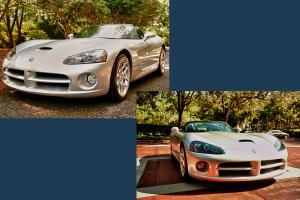Looking for design inspiration? Browse our curated collections!
November 19th, 2013 - 08:56 AM

While I was developing my digital photography skills, I entered an image of an antique car into a local photo contest and the image took first place. Shortly after it was awarded, one of the judges, a master photographer, came to me with a suggestion. She told me that if I had photographed the image from the other side, it would have given the image more depth and would have given the image a more three dimensional appearance.
Having a tremendous amount of respect and admiration for this photographer, I immediately did some research into the topic and found several articles which confirmed her advice. By using the shadows in an image to give dimension to your subject, whatever it maybe will enhance the appeal of an image.
If you consider that you are taking a three dimensional subject and placing it onto a two dimensional medium, quite naturally your image will look flat. However, if you take a minute and look at the way the shadows are falling on your subject and angle your image so you are shooting say at about 25 to 45 degrees toward the direction of the light source, it will help you to give your image that little bit of depth and texture.
Take a look at the two images of the Viper, above and to the left. In the image on the left the sun is almost directly overhead and the shadow is falling mostly beneath the vehicle. On the image to the lower right taken about two hours earlier, the light is coming from the right to the left while the image was taken from the left front of the vehicle to the right rear.
See how much more depth there appears to be in the image to the lower right!!! The angle at which both images were taken is nearly identical yet by using this technique image to the lower right has more dimension or depth to it.
The same works with human subjects as I discussed in the previous article about using your flash off camera. The on-board flash gives you a flat light, by moving your light off the camera and at an angle the light will add dimension to your subject. The old masters, like Rembrandt used this technique to light their subjects as well. Rembrandt used light coming from 45 degrees from above his subjects and 45 degrees from the left of his subjects to produce the “Rembrandt” triangle created on the face by the shadow of the nose meeting the opposite cheekbone.
Comments
Frank Feliciano
10 Years Ago
Boynton Beach, FL
Dennis, Glad the blog articles are helpful.